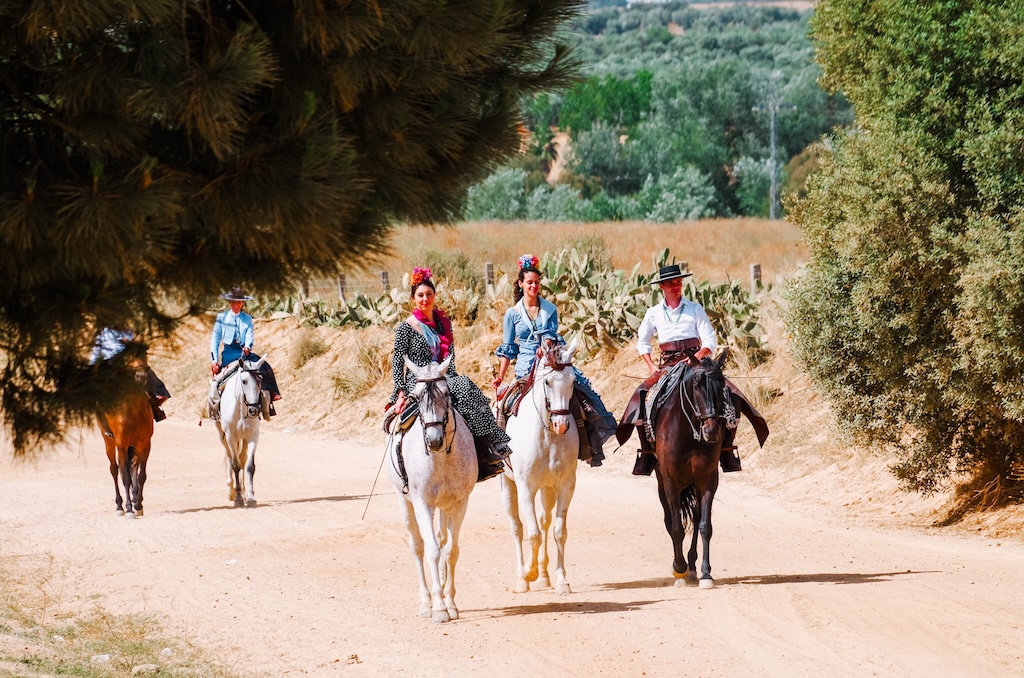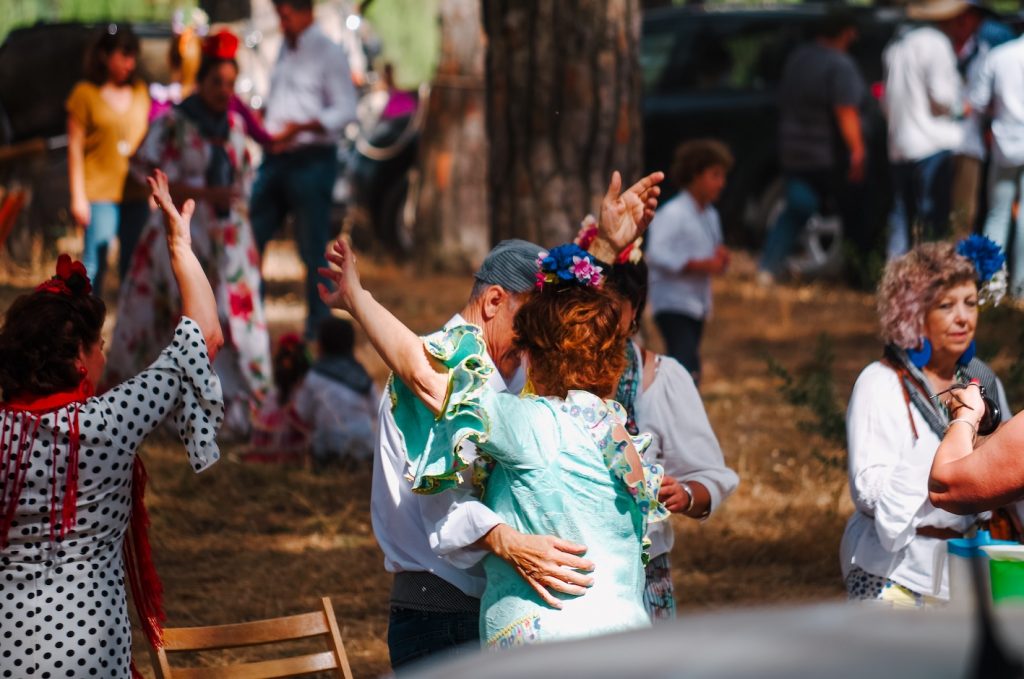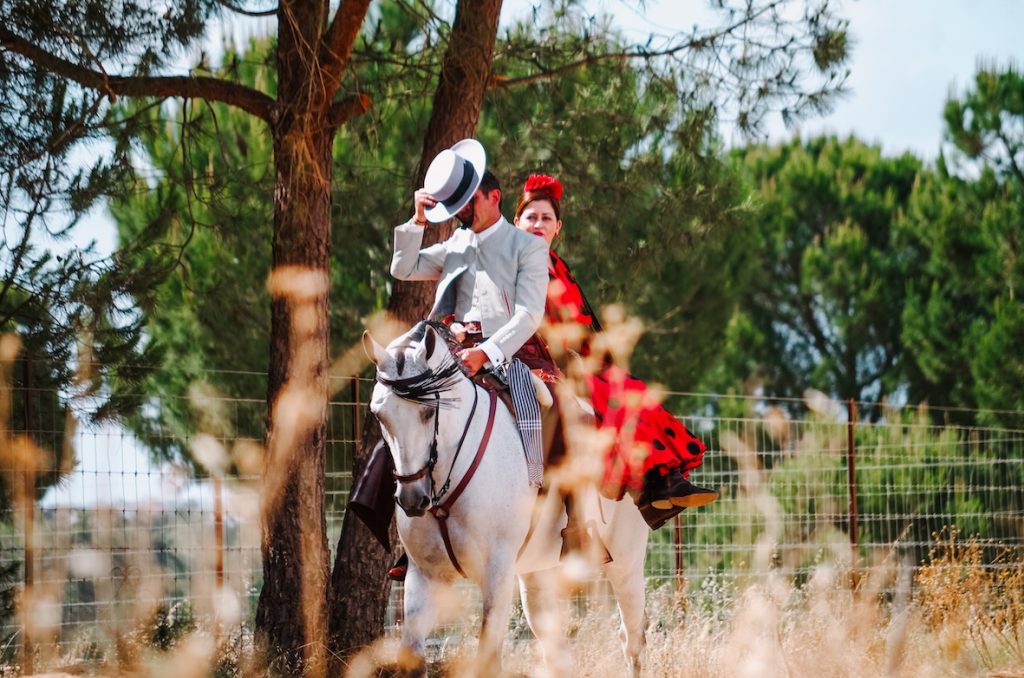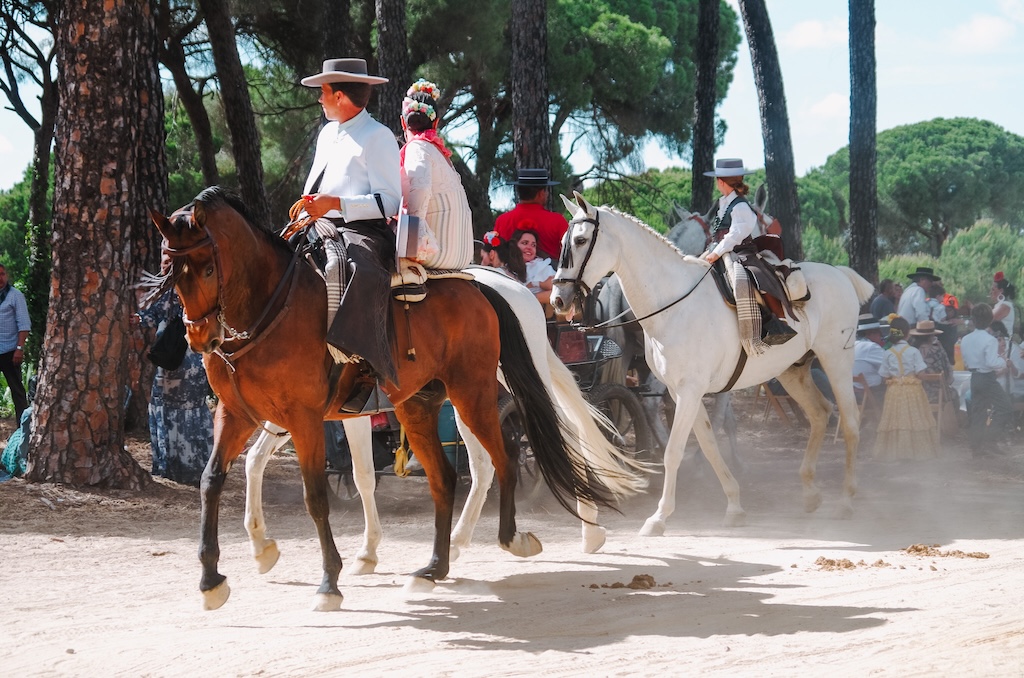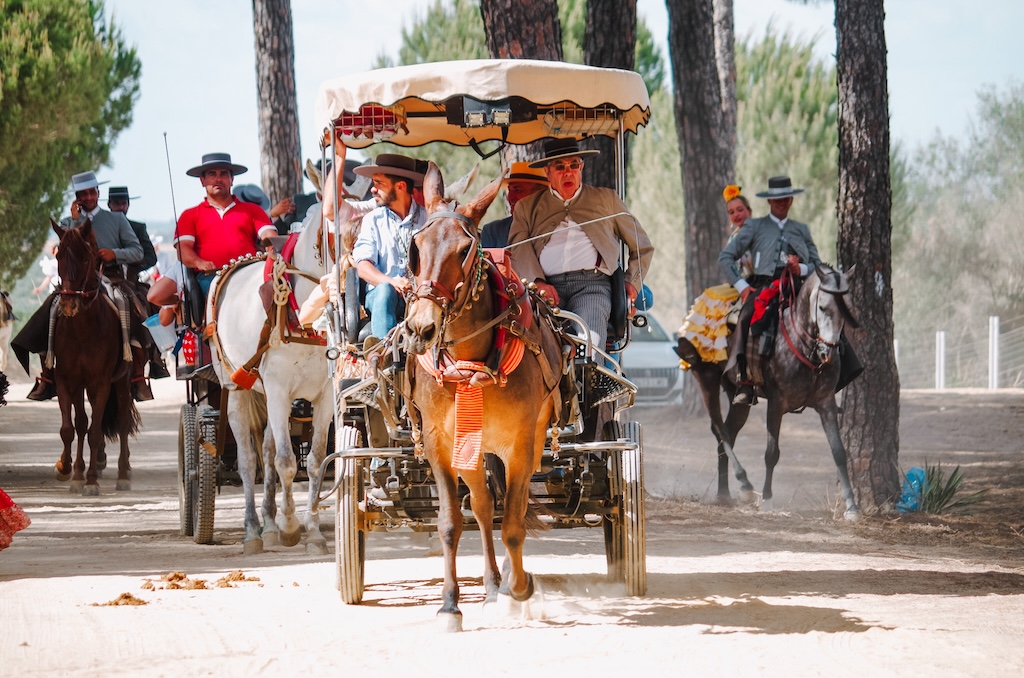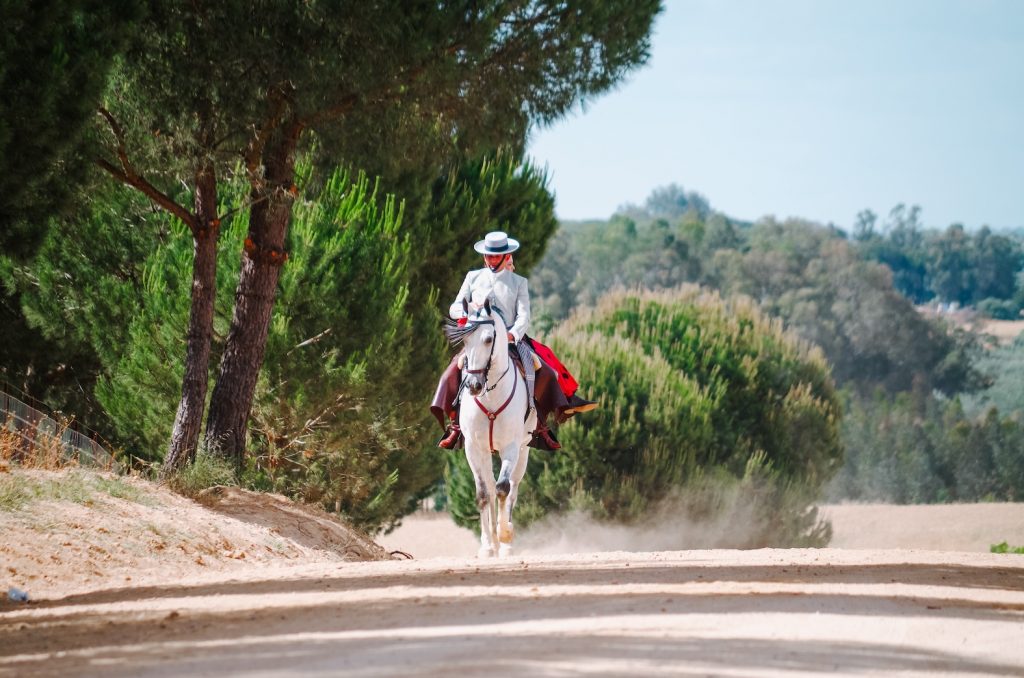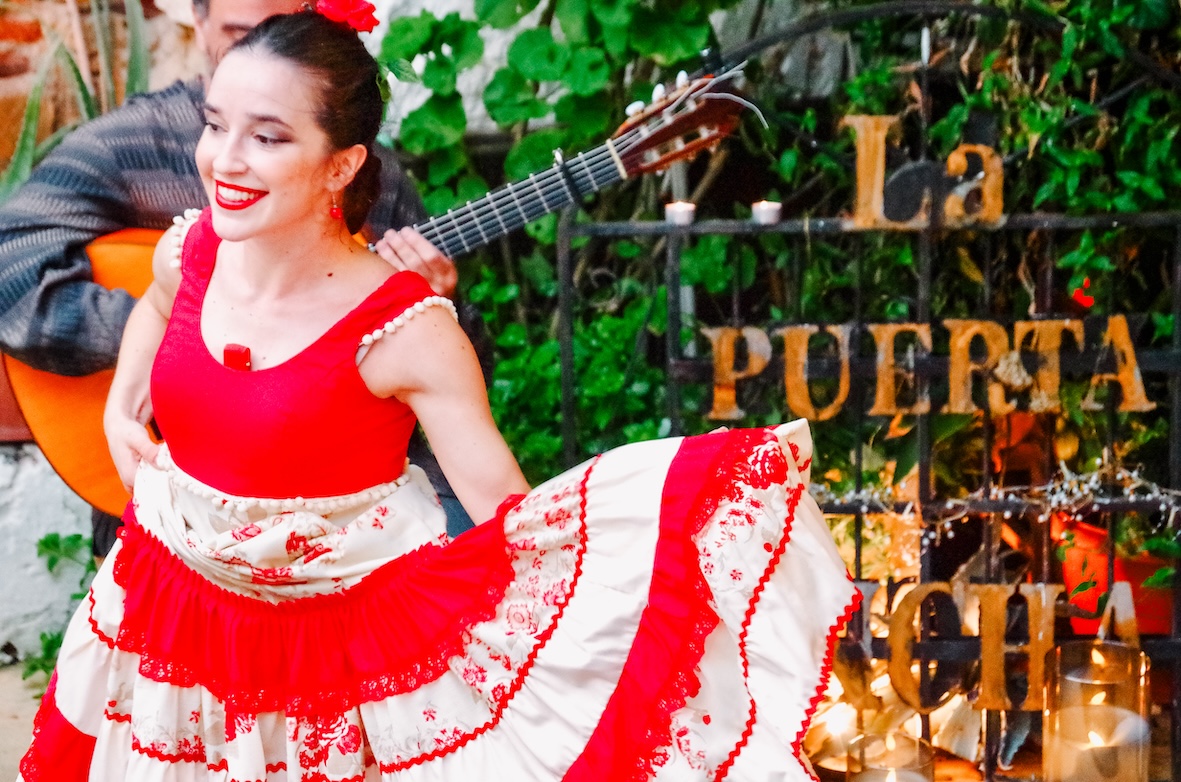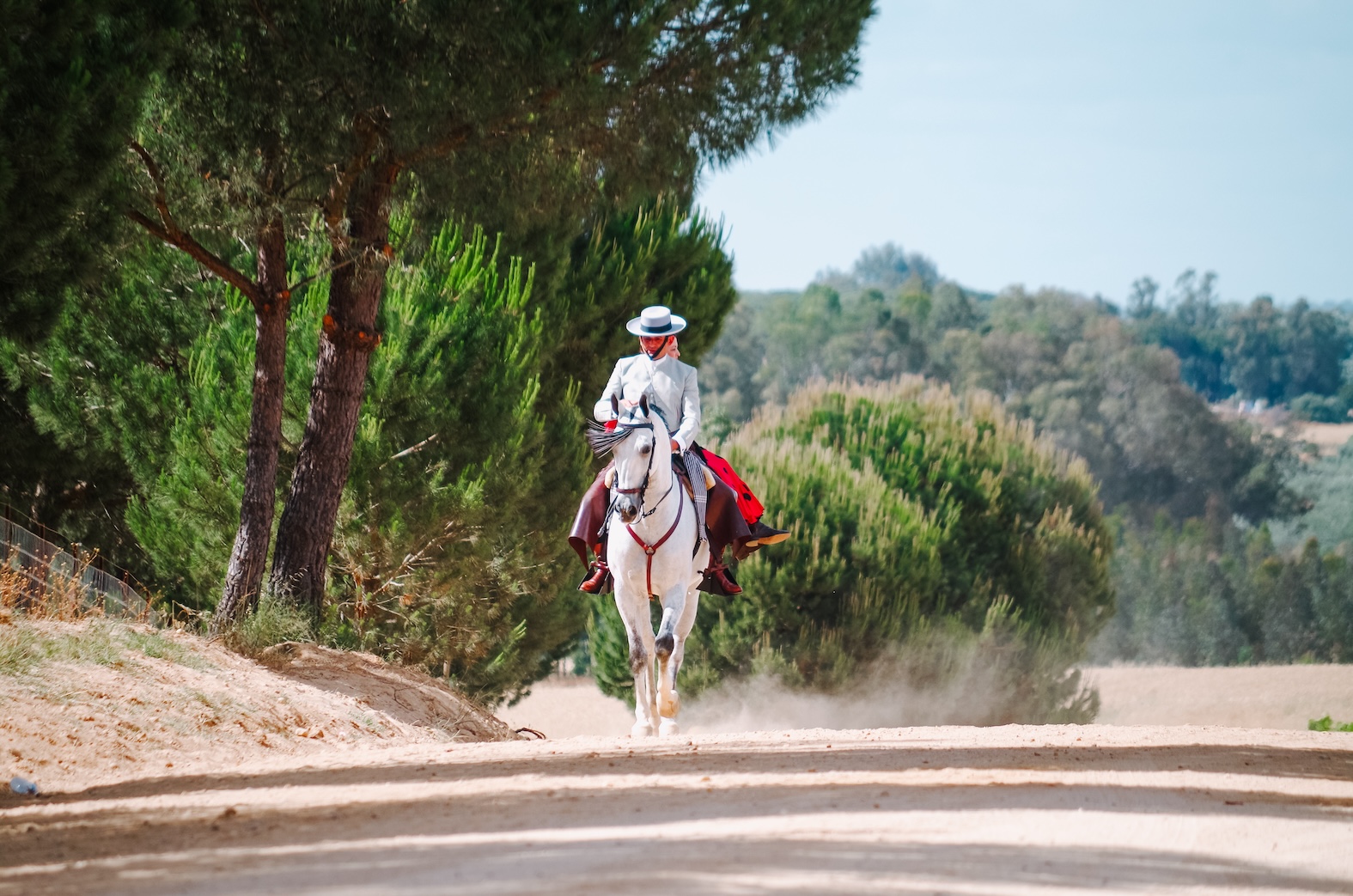Did you know that the Spanish word “romería” (pilgrimage) comes from “Romeros,” referring to those who journeyed to Rome, the resting place of apostles Peter and Paul, the heart of Christianity? Historically, pilgrimages began in the Middle Ages and became more established in the Modern Age. These journeys were vibrant events where groups travel to a sanctuary, filled with singing, music, dancing, traditional costumes, delicious food, fireworks, and the stunning beauty of the locations they visit.
These events would blend religious experiences with official rituals and spontaneous activities, including games, tournaments, and even bullfights. In popular Catholicism, these pilgrimages, along with processions, are special moments where people connect with the divine in a festive atmosphere.
It’s important to remember that, like any festival, the community plays a central role. Individuals felt a strong connection to their community through shared symbols and messages that reinforce their collective identity and social bonds. This sense of togetherness was celebrated through various customary and ritual activities, creating a warm and inclusive environment.
These festivals would usually take place in spring and summer months, from Easter to October, aligning with harvest time and sometimes blending in with old agricultural traditions that have a touch of Christian influence. They were backed by fun activities like fairs, special permissions from royalty or nobility, and bustling markets where people trade goods and share acts of kindness, like giving bread, wine, and cheese to those in need. Besides their religious significance, these festivals would strengthen community bonds and family connections, offering a chance to share both happy and tough times, and to ease social tensions for a while. Every year, these religious would celebrations bring the community together for a pilgrimage to a sanctuary where a cherished image is honored, often set in a beautiful natural spot like a hill or valley, symbolizing a link to the divine. The “romerías” soon became, like the other festivals, a transcendental element of the cultural system of the towns of Spain.
